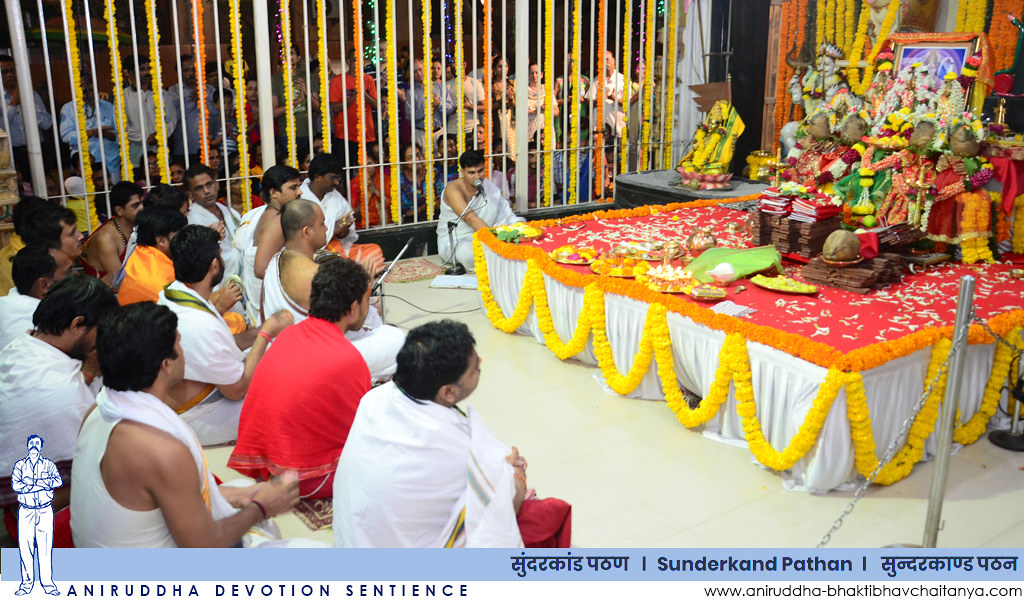Overview
Introduction to Sunderkand
Sunderkand is a chapter in the Indian epic Ramayana that focuses on the adventures of Hanuman. It is considered one of the most important chapters in the epic and holds great significance in Hindu mythology. The word ‘Sunderkand’ translates to ‘beautiful chapter’ in English, and it is indeed a beautiful and captivating part of the Ramayana. In this chapter, Hanuman embarks on a journey to find Sita, the wife of Lord Rama, who has been kidnapped by the demon king Ravana. The story of Sunderkand is filled with bravery, devotion, and determination, making it a source of inspiration for millions of people. If you are interested in exploring the depths of Sunderkand and delving into its mysteries, you can download the chapter and immerse yourself in the captivating tale.
Significance of Sunderkand in Hindu mythology
Sunderkand is an integral part of Hindu mythology and holds immense significance. It is a chapter in the epic Ramayana that focuses on the exploits of Lord Hanuman. The word ‘Sunderkand’ literally translates to ‘beautiful chapter’, and it is indeed a beautiful and captivating tale. Hanuman, the mighty monkey god, plays a central role in Sunderkand as he embarks on a journey to find Sita, the wife of Lord Rama, who has been abducted by the demon king Ravana. This chapter highlights Hanuman’s unwavering devotion, strength, and intelligence, as he overcomes numerous obstacles and faces powerful adversaries. Sunderkand is revered by Hindus worldwide and is often recited or listened to with great devotion. It symbolizes the triumph of good over evil and serves as a source of inspiration and spiritual upliftment.
Summary of the events in Sunderkand
The Sunderkand is a chapter in the Hindu epic Ramayana that focuses on the adventures of Hanuman, the monkey god. It is considered one of the most important chapters in the Ramayana as it highlights Hanuman’s devotion and loyalty to Lord Rama. The events in Sunderkand revolve around Hanuman’s journey to Lanka in search of Sita, Lord Rama’s wife who has been abducted by the demon king Ravana. Hanuman’s bravery, intelligence, and strength are showcased as he overcomes various obstacles and faces powerful adversaries. The chapter ends with Hanuman successfully finding Sita and delivering Lord Rama’s message of hope and assurance to her. The Sunderkand is widely revered and recited by devotees, and its lyrics can be found in various formats, including PDF versions that can be easily accessed online.
Historical Background

Origins of Sunderkand
Sunderkand is a significant chapter in the Indian epic Ramayana, which is attributed to the sage Valmiki. It is believed to be composed around 500 BCE. The word ‘Sunderkand’ translates to ‘beautiful section’ in English. This chapter narrates the journey of Hanuman to Lanka in search of Sita, the wife of Lord Rama, who had been abducted by the demon king Ravana. Sunderkand is revered for its profound spiritual teachings and serves as a source of inspiration for millions of devotees around the world.
Influence of Valmiki’s Ramayana
The influence of Valmiki’s Ramayana on Indian culture and literature cannot be overstated. Ramayana, one of the two major Sanskrit epics of ancient India, has shaped the moral and ethical fabric of the country for centuries. It has served as a guiding light for generations, teaching valuable life lessons and showcasing the ideals of righteousness, devotion, and duty. The epic’s impact extends beyond religious boundaries, with its characters and stories becoming ingrained in the collective consciousness of the nation. The teachings of Ramayana have inspired countless adaptations, retellings, and artistic interpretations, making it a timeless and cherished piece of literature.
Sunderkand in other ancient texts
Sunderkand in other ancient texts
Symbolism and Allegories

The hidden meanings in Sunderkand
Sunderkand, a chapter from the epic Ramayana, holds deep and profound meanings that are often hidden beneath its verses. This sacred text is not just a narrative of Lord Hanuman’s journey to find Sita, but also a treasure trove of spiritual wisdom and life lessons. The hidden meanings in Sunderkand reveal the intricate connections between human emotions, divine intervention, and the ultimate quest for truth. As we delve into the depths of this ancient scripture, we uncover the profound significance of each word and the timeless wisdom it imparts.
Allegorical representation of characters
The allegorical representation of characters in Sunderkand provides a deeper understanding of the story. Multiple characters in the epic serve as symbols of various virtues and vices. Hanuman, the devoted and courageous monkey god, embodies loyalty and determination. His unwavering faith in Lord Rama and his selfless acts of bravery make him a true hero. On the other hand, Ravana, the demon king, represents greed, arrogance, and the destructive nature of power. His relentless pursuit of Sita and his refusal to heed the advice of his wise councilors ultimately leads to his downfall. Through these characters, the epic explores the timeless themes of good versus evil, righteousness versus wickedness, and the consequences of one’s actions.
Symbolism in the journey of Hanuman
The journey of Hanuman in the Sundara Kanda holds deep symbolism and significance. It represents the inner journey of an individual towards self-realization and spiritual enlightenment. Each step taken by Hanuman on his mission to find Sita in Lanka is a metaphorical representation of the challenges and obstacles faced by individuals in their quest for truth and liberation. The crossing of the ocean symbolizes the crossing of the vast sea of ignorance and delusion, while the encounter with Surasa, the demoness, represents the tests and temptations that one must overcome on the spiritual path. Hanuman’s meeting with the demoness Lankini signifies the confrontation with one’s own inner demons and the need to conquer them. Through his unwavering devotion and determination, Hanuman ultimately finds Sita, representing the attainment of union with the divine. The symbolism in the journey of Hanuman in the Sundara Kanda serves as a guiding light for seekers of truth and spirituality, inspiring them to overcome obstacles and find their true purpose in life.
Devotion and Spirituality

Sunderkand as a tool for devotion
Sunderkand is a powerful tool for devotion, allowing individuals to connect deeply with Lord Hanuman and seek his blessings. It is a chapter from the Indian epic Ramayana, and it narrates the heroic journey of Lord Hanuman to find and rescue Goddess Sita from the clutches of the demon king Ravana. The recitation of Sunderkand is believed to bring immense spiritual benefits, including protection from evil forces, fulfillment of desires, and the attainment of inner peace. The verses in Sunderkand are filled with profound wisdom and teachings, highlighting the virtues of devotion, courage, and loyalty. By reciting and meditating on these verses, devotees can strengthen their faith, purify their hearts, and deepen their connection with the divine. The most important passages in Sunderkand, such as Hanuman’s leap across the ocean or his encounter with the demoness Surasa, can be formatted in bold to emphasize their significance and impact.
Impact of reciting Sunderkand
Reciting Sunderkand has a profound impact on the lives of devotees. It is believed that by reciting this sacred text, one can experience the miracles of Sunderkand and attain spiritual enlightenment. The recitation of Sunderkand is said to invoke the grace of Lord Hanuman, who is revered as the epitome of devotion and strength. Discovering the miracles of Sunderkand and experiencing Lord Hanuman’s grace can bring about positive transformations in one’s life. It is a spiritual practice that not only deepens one’s connection with the divine but also provides guidance and protection in times of need.
Spiritual lessons from Sunderkand
Sunderkand is a significant chapter in the Indian epic, Ramayana. It depicts the journey of Lord Hanuman to find and rescue Sita, the wife of Lord Rama, who has been abducted by the demon king, Ravana. This chapter is filled with numerous spiritual lessons that can be applied to our daily lives. One of the key lessons from Sunderkand is the unwavering devotion and loyalty of Hanuman towards Lord Rama. Despite facing numerous obstacles and challenges, Hanuman never wavers in his commitment to finding Sita and bringing her back to Rama. This teaches us the importance of staying dedicated and focused on our goals, even in the face of adversity. Another important lesson from Sunderkand is the power of faith. Hanuman’s unwavering faith in Lord Rama gives him the strength to overcome all obstacles and accomplish his mission. This reminds us of the significance of having faith in a higher power and trusting that everything will work out for the best. Additionally, Sunderkand teaches us the importance of humility. Despite his immense strength and power, Hanuman remains humble throughout his journey. He never boasts or takes credit for his accomplishments, instead attributing everything to the grace of Lord Rama. This serves as a reminder to stay humble and grounded, regardless of our achievements. In conclusion, Sunderkand is not just a story, but a source of valuable spiritual lessons. It teaches us about devotion, faith, and humility, and reminds us of the power of unwavering commitment to our goals.
Controversies and Debates

Different interpretations of Sunderkand
Sunderkand, a chapter from the Hindu epic Ramayana, has been interpreted in various ways by scholars and devotees. Different interpretations of Sunderkand have emerged over the centuries, each shedding light on different aspects of the text. One interpretation focuses on the jewel-like qualities of the chapter, highlighting its beauty and significance. Another interpretation delves into the symbolic meaning of the events and characters in Sunderkand, uncovering deeper spiritual truths. These interpretations offer readers a diverse range of perspectives and insights into the profound teachings of Sunderkand.
Controversial aspects of the text
The Sunderkand, a chapter from the ancient Hindu epic Ramayana, has long been a subject of fascination and controversy. One of the most controversial aspects of the text is its portrayal of Hanuman, the monkey god. Some scholars argue that Hanuman’s actions in the Sunderkand, such as setting fire to Lanka, embrace violence and go against the teachings of peace and non-violence. Others, however, interpret Hanuman’s actions as necessary for the greater good, highlighting his unwavering devotion to Lord Rama. This debate continues to spark discussions among scholars and devotees alike, shedding light on the complex and multi-faceted nature of the Sunderkand.
Debates on the authorship of Sunderkand
The authorship of Sunderkand has been a subject of intense debate among scholars and researchers. While some attribute the composition to the renowned sage Valmiki, others argue that it may have been the work of a different author or a collective effort. The debates on the authorship of Sunderkand have led to a deeper exploration of its origins and the various interpretations it has garnered over the centuries. Unlocking the mysteries behind the authorship of Sunderkand has become a fascinating endeavor for those interested in understanding the rich literary tradition of ancient India.
Modern Relevance

Sunderkand in contemporary culture
Sunderkand, a chapter from the epic Ramayana, continues to hold immense significance in contemporary culture. It is not just a religious scripture but also a source of inspiration and guidance for millions of people around the world. The story of Lord Hanuman’s journey to Lanka in search of Sita, the wife of Lord Rama, is filled with bravery, devotion, and selflessness. Sunderkand teaches us the importance of faith, perseverance, and the power of good over evil. It reminds us that no matter how challenging the circumstances may be, with unwavering determination and the blessings of the divine, we can overcome any obstacle. The recitation of Sunderkand is believed to bring peace, prosperity, and protection from negative energies. It is often performed in religious ceremonies, festivals, and even in households as a way to seek blessings and divine intervention. The popularity of Sunderkand has transcended religious boundaries and has become a symbol of unity and spirituality for people of all faiths.
Adaptations of Sunderkand in literature and performing arts
Sunderkand, a chapter from the ancient Indian epic Ramayana, has been widely adapted in literature and performing arts. One notable adaptation of Sunderkand is found in the state of Odisha, where it is performed as a traditional form of storytelling known as ‘Pala’. In this art form, skilled performers recite and enact the story of Sunderkand, captivating the audience with their expressive gestures and melodious voices. The rich cultural heritage of Odisha is beautifully showcased through the portrayal of this timeless epic. The adaptations of Sunderkand in literature and performing arts not only preserve the ancient traditions but also make the story accessible to a wider audience, allowing them to appreciate the depth and beauty of this revered chapter from Ramayana.
Relevance of Sunderkand in today’s society
Sunderkand, a chapter from the Indian epic Ramayana, holds immense relevance in today’s society. The practice of reciting Sunderkand, also known as Paath, has been passed down through generations, serving as a source of spiritual guidance and solace. In a fast-paced and stressful world, Sunderkand provides a sanctuary of peace and tranquility. It offers a powerful narrative of devotion, determination, and the triumph of good over evil. Through the recitation of Sunderkand, individuals find inspiration to overcome challenges and find inner strength. Additionally, Sunderkand serves as a reminder of the importance of faith and the belief in a higher power. The timeless teachings and moral values depicted in Sunderkand continue to resonate with people of all ages and backgrounds, making it a cherished part of today’s society.
Author Profile

Latest entries
- 28 June 2025BlogHow to Choose the Best High-Yield Savings Account with 5%+ Interest in India (2025 Guide)
- 28 December 2024Blog13 High CPC Blog Niche for 2025
- 28 December 2024BlogTop 6 Employee Management Software for Small Businesses
- 19 December 2024BlogShri Hanuman Chalisa in Hindi Text with English Translation

